 |
 |
Post Archive
January (2)
Have we entered the era of the 1 year sequencer release cycle? *Updated*
Tuesday, January 13, 2015
Illumina's $1000 Genome*
Wednesday, January 15, 2014
2013 (4)Have we entered the era of the 1 year sequencer release cycle? *Updated*
Tuesday, January 13, 2015
Illumina's $1000 Genome*
Wednesday, January 15, 2014
May (1)February (3)
A coming of age for PacBio and long read sequencing? #AGBT13
Saturday, February 23, 2013
Next Generation Sequencing rapidly moves from the bench to the bedside #AGBT13
Friday, February 22, 2013
#AGBT day one talks and observations: WES/WGS, kissing snails, Poo bacteria sequencing
Wednesday, February 20, 2013
2012 (5)A coming of age for PacBio and long read sequencing? #AGBT13
Saturday, February 23, 2013
Next Generation Sequencing rapidly moves from the bench to the bedside #AGBT13
Friday, February 22, 2013
#AGBT day one talks and observations: WES/WGS, kissing snails, Poo bacteria sequencing
Wednesday, February 20, 2013
September (2)
Got fetal DNA on the brain?
Friday, September 28, 2012
Memes about 'junk DNA' miss the mark on paradigm shifting science
Friday, September 7, 2012
August (1)
So, you've dropped a cryovial or lost a sample box in your liquid nitrogen container...now what?
Thursday, August 16, 2012
July (1)February (1)
A peril of "Open" science: Premature reporting on the death of #ArsenicLife
Thursday, February 2, 2012
2011 (20)Got fetal DNA on the brain?
Friday, September 28, 2012
Memes about 'junk DNA' miss the mark on paradigm shifting science
Friday, September 7, 2012
So, you've dropped a cryovial or lost a sample box in your liquid nitrogen container...now what?
Thursday, August 16, 2012
A peril of "Open" science: Premature reporting on the death of #ArsenicLife
Thursday, February 2, 2012
October (7)
Antineoplastons? You gotta be kidding me!
Thursday, October 27, 2011
YouTube: Just a (PhD) Dream
Thursday, October 27, 2011
Slides - From the Bench to the Blogosphere: Why every lab should be writing a science blog
Wednesday, October 19, 2011
Fact Checking AARP: Why soundbytes about shrimp on treadmills and pickle technology are misleading
Monday, October 17, 2011
MHV68: Mouse herpes, not mouth herpes, but just as important
Monday, October 17, 2011
@DonorsChoose update: Pictures of the materials we bought being used!!
Friday, October 14, 2011
Is this supposed to be a feature, @NPGnews ?
Tuesday, October 4, 2011
August (3)
A dose of batshit crazy: Bachmann would drill in the everglades if elected president
Monday, August 29, 2011
A true day in lab
Wednesday, August 10, 2011
A day in the lab...
Monday, August 8, 2011
July (1)June (1)May (1)April (2)
University of Iowa holds Science Writing Symposium
Tuesday, April 26, 2011
Sonication success??
Monday, April 18, 2011
March (3)
Circle of life
Thursday, March 17, 2011
Curing a plague: Cryptocaryon irritans
Wednesday, March 9, 2011
Video: First new fish in 6 months!!
Wednesday, March 2, 2011
February (1)January (1)
2010 (13)Antineoplastons? You gotta be kidding me!
Thursday, October 27, 2011
YouTube: Just a (PhD) Dream
Thursday, October 27, 2011
Slides - From the Bench to the Blogosphere: Why every lab should be writing a science blog
Wednesday, October 19, 2011
Fact Checking AARP: Why soundbytes about shrimp on treadmills and pickle technology are misleading
Monday, October 17, 2011
MHV68: Mouse herpes, not mouth herpes, but just as important
Monday, October 17, 2011
@DonorsChoose update: Pictures of the materials we bought being used!!
Friday, October 14, 2011
Is this supposed to be a feature, @NPGnews ?
Tuesday, October 4, 2011
A dose of batshit crazy: Bachmann would drill in the everglades if elected president
Monday, August 29, 2011
A true day in lab
Wednesday, August 10, 2011
A day in the lab...
Monday, August 8, 2011
University of Iowa holds Science Writing Symposium
Tuesday, April 26, 2011
Sonication success??
Monday, April 18, 2011
Circle of life
Thursday, March 17, 2011
Curing a plague: Cryptocaryon irritans
Wednesday, March 9, 2011
Video: First new fish in 6 months!!
Wednesday, March 2, 2011
December (3)
The first step is the most important
Thursday, December 30, 2010
Have we really found a stem cell cure for HIV?
Wednesday, December 15, 2010
This paper saved my graduate career
Tuesday, December 14, 2010
November (3)
Valium or Sex: How do you like your science promotion
Tuesday, November 23, 2010
A wedding pic.
Tuesday, November 16, 2010
To rule by terror
Tuesday, November 9, 2010
October (2)
Summary Feed: What I would be doing if I wasn't doing science
Wednesday, October 6, 2010
"You have more Hobbies than anyone I know"
Tuesday, October 5, 2010
September (5)
Hiccupping Hubris
Wednesday, September 22, 2010
A death in the family :(
Monday, September 20, 2010
The new lab fish!
Friday, September 10, 2010
What I wish I knew...Before applying to graduate school
Tuesday, September 7, 2010
Stopping viruses by targeting human proteins
Tuesday, September 7, 2010
The first step is the most important
Thursday, December 30, 2010
Have we really found a stem cell cure for HIV?
Wednesday, December 15, 2010
This paper saved my graduate career
Tuesday, December 14, 2010
Valium or Sex: How do you like your science promotion
Tuesday, November 23, 2010
A wedding pic.
Tuesday, November 16, 2010
To rule by terror
Tuesday, November 9, 2010
Summary Feed: What I would be doing if I wasn't doing science
Wednesday, October 6, 2010
"You have more Hobbies than anyone I know"
Tuesday, October 5, 2010
Hiccupping Hubris
Wednesday, September 22, 2010
A death in the family :(
Monday, September 20, 2010
The new lab fish!
Friday, September 10, 2010
What I wish I knew...Before applying to graduate school
Tuesday, September 7, 2010
Stopping viruses by targeting human proteins
Tuesday, September 7, 2010
 |
 |
Blogger Profile
Brian Krueger, PhD
Columbia University Medical Center
New York NY USA
Brian Krueger is the owner, creator and coder of LabSpaces by night and Next Generation Sequencer by day. He is currently the Director of Genomic Analysis and Technical Operations for the Institute for Genomic Medicine at Columbia University Medical Center. In his blog you will find articles about technology, molecular biology, and editorial comments on the current state of science on the internet.
My posts are presented as opinion and commentary and do not represent the views of LabSpaces Productions, LLC, my employer, or my educational institution.
Please wait while my tweets load 
 |
 |
Post Tags
youtube sequencing genetics technology conference wedding pictures not science contest science promotion outreach internet cheerleaders rock stars lab science tips and tricks chip-seq science politics herpesviruses
 |
 |
Around the Network
Author: Brian Krueger, PhD | Comments: 9
Author: Brian Krueger, PhD | Comments: 0
Author: Brian Krueger, PhD | Comments: 2
Author: Brian Krueger, PhD | Comments: 2
 |
 |
Blogroll
Drugmonkey (Scientopia)
How AAAS and Science magazine really feel about sexual harassment cases in science
Mar 10, 2016, 1:37pm
Mar 08, 2016, 11:30am
Jul 14, 2011, 8:33pm
Views: 24085 | Comments: 0
If you’re an avid follower of popular science in today’s news media, you might have noticed a recurring theme. Genomics is everywhere. On an almost weekly basis, the New York Times, the New Yorker, Forbes and a myriad of other outlets are publishing stories with overly optimistic ledes about doctors and gene sequencers being replaced by apps and iPhone accessories. You would be forgiven if you thought genomics was “solved” and we’re 5 years out from creating a Star Trek inspired “tricorder” that near instantly sequences your genome and tells you, without equivocation, what malady is afflicting you and how exactly to overcome said disorder. The fact of the matter is that we’re not there yet, not by a long shot.
. . . More
. . . More
Views: 13036 | Comments: 0
The Advances in Genome Biotechnology conference starts tomorrow in Marco Island, FL. Twitter and the blogs have been a flurry of speculation about what the major vendors will present at this years’ meeting. In previous years we’ve seen the introduction of new, “disruptive” technologies such as the ion torrent platform, the Oxford Nanopore Minion and the PacBio RS. Like many, I have mixed emotions about this conference. It’s more CES than science. Given the history of the major announcements and where those products are now 3 and 5 years out it’s hard to get excited about a show stopper. While technically impressive, the MinIon is still mired in problems that were glossed over in the fanfare of the original announcement and PacBio is FINALLY starting to deliver on the promises it made eons ago. I should also mention my disappointment with Ion Torrent here. This is yet another company that made a major announcement at AGBT and failed spectacularly. Keith Robison thinks they still have a sho . . . More
Views: 23964 | Comments: 0

Yesterday marked the kickoff of the JP Morgan Healthcare Conference in San Francisco. Following last years’ lead, Illumina once again used this platform as an opportunity to announce the release of a number of new products including 4 “New” sequencing systems ahead of the more scientifically focused Advances in Genome Biotechnology conference in February. At this same time in 2014, Illumina presented the HiSeq X ten sequencing system which is a system for population scale genomics composed of ten HiSeq X sequencers. Illumina touted this system’s reduced reagent price, increased speed, and expanded capacity. It has now taken much of the technology from this HiSeq X system and put it into two new lower tier models: the HiSeq 3000 and HiSeq 4000.
. . . More
. . . More
Views: 12777 | Comments: 0
Illumina, the world leader in short read DNA sequencing, made a series of very big announcements yesterday at the JPMorgan Healthcare Conference. These developments have many sequencing labs around the world excited and worried all at the same time. The excitement comes from the fact that it appears on the surface that Illumina has broken the $1000 genome* barrier – the worry comes from the realization that only a few of us can afford it.
. . . More
. . . More
Views: 16921 | Comments: 0
It's been a long run and we have a strong readership of the press releases but sadly I no longer have the time or the interest to continue posting press releases on the site. My additional work commitments here at Duke have really limited the amount of time I can devote to this and grabbing the press releases every night/morning for an hour or two just became tedious. I'd like to spend my free time doing more creative things so hopefully I'll give my neglected blog some attention over the next few months.
To those who have been loyal followers of the press releases: Thanks for your devotion and continued support. It does pain me to stop posting the press releases knowing they are served to nearly a million visitors a month, but I just do not have the time or desire to continue these activities. I will, however, continue to post/link to mainstream news stories and blog posts I find interesting, so keep an eye on twitter and the right hand column here on the blogs. I'll be adding a "from the web section" shortly.
The blogs will still be here for anyone that would like to use them as an outlet. Just send me an email or contact me on twitter!
. . . More
To those who have been loyal followers of the press releases: Thanks for your devotion and continued support. It does pain me to stop posting the press releases knowing they are served to nearly a million visitors a month, but I just do not have the time or desire to continue these activities. I will, however, continue to post/link to mainstream news stories and blog posts I find interesting, so keep an eye on twitter and the right hand column here on the blogs. I'll be adding a "from the web section" shortly.
The blogs will still be here for anyone that would like to use them as an outlet. Just send me an email or contact me on twitter!
. . . More
Views: 30704 | Comments: 9
Last by Michael Schatz on Feb 26, 2013, 12:13am
Last by Michael Schatz on Feb 26, 2013, 12:13am
Aside from the dubstep pumping out of the Roche and Agilent booths, the volume of AGBT has been somewhat muted. There was no grand offering of new hardware or over the top promises of sequencing genomes on what now appear to be vaporware USB thumb drives. This is my first in person experience of AGBT, so as a virgin it seems for the most part to be rooted in the science despite the ridiculous parties and “showgirl” casino nights. The atmosphere here is unlike any other science conference I’ve attended. It’s like the bastard child of a Gordon Conference and a Las Vegas Porn Convention. I really hope that the deep pockets of Sequencing Centers are more influenced by the science than the free dinner parties and alcohol, but I have pretty low confidence in humanity. Regardless, I think everyone in attendance today was overwhelmed by a stunning talk from PacBio and the dramatic advancements of their long read technology.
The PacBio talk came on the heels of what felt like a warm-up opening act from Jeremy Schmutz of the Hudson Alpha Institute. Schmutz has been working with a start-up that was recently acquired by illumina called . . . More
The PacBio talk came on the heels of what felt like a warm-up opening act from Jeremy Schmutz of the Hudson Alpha Institute. Schmutz has been working with a start-up that was recently acquired by illumina called . . . More
Views: 13283 | Comments: 0
As the second day of AGBT kicked off, it became quite clear that this meeting would be dominated by medical genomics. There were a few talks sprinkled in about gut or sewer microbiomes but the vast majority of the talks the last two days have been on clinical genomic sequencing. This is fine by me since it’s exactly what we do in the Genomic Analysis Facility in Duke’s Center for Human Genome Variation. It’s really nice to see how other centers are approaching these problems. Unfortunately, this is one of the few opportunities we have to peek into each other’s operations.
Yesterday’s first talk was by Russ Altman of Stanford University. Russ has been a leader in the field of pharmacogenomics and he presented his work on developing the Pharmacogenomics Knowledgebase (PharmGKB, pharmGKB.org). He led by saying, “Don’t ever give a talk about a website,” and in his case it was true because WiFi in the conference room was down for the majority of his talk. He urged the crowd to follow along on the website, but only those of us with a cell connection could join him. Russ pointed out the major drawbacks of using GWAS and SNP chips for obtaining information about pharmacoenomic associations and joined pretty much everyone else in saying that the standard t . . . More
Yesterday’s first talk was by Russ Altman of Stanford University. Russ has been a leader in the field of pharmacogenomics and he presented his work on developing the Pharmacogenomics Knowledgebase (PharmGKB, pharmGKB.org). He led by saying, “Don’t ever give a talk about a website,” and in his case it was true because WiFi in the conference room was down for the majority of his talk. He urged the crowd to follow along on the website, but only those of us with a cell connection could join him. Russ pointed out the major drawbacks of using GWAS and SNP chips for obtaining information about pharmacoenomic associations and joined pretty much everyone else in saying that the standard t . . . More
Views: 12995 | Comments: 2
Last by Brian Krueger, PhD on Feb 21, 2013, 11:42pm
Last by Brian Krueger, PhD on Feb 21, 2013, 11:42pm
Today I dusted off my luggage and headed down to the annual Advances in Genome Biology and Technology meeting in Marco Island, FL. Historically, this meeting has been the Detroit Auto Show of Genomics where companies and labs release their beautiful shiny new products and methodologies. In past years, attendees were showered with fireworks displays and epic swag bags. The tone this year is palpably more mutated. One only has to point to the display banners located on the AGBT presenter stage for evidence of this: banners for Bronze and Silver Sponsors appear to hang waiting for accompaniment by Gold and Platinum brethren…there’s even space allocated for them.
Despite the tightened biotech purse strings, the event appears from the outset to be extremely well organized. There could be a few more power outlets for those of us carrying a small fortune in lithium powered devices, but I guess I’ll manage. And of course there’s no live streaming or any form of web enabled anything…but I can gripe about that in a long winded and whiny post next week.
The evening opened with a brief introduction with a description of some new meeting changes. This is the biggest AGBT yet with over 800 attendees. A new abstract selection committee was created . . . More
Despite the tightened biotech purse strings, the event appears from the outset to be extremely well organized. There could be a few more power outlets for those of us carrying a small fortune in lithium powered devices, but I guess I’ll manage. And of course there’s no live streaming or any form of web enabled anything…but I can gripe about that in a long winded and whiny post next week.
The evening opened with a brief introduction with a description of some new meeting changes. This is the biggest AGBT yet with over 800 attendees. A new abstract selection committee was created . . . More
Views: 9899 | Comments: 3
Last by Brian Krueger, PhD on Sep 28, 2012, 5:02pm
Last by Brian Krueger, PhD on Sep 28, 2012, 5:02pm
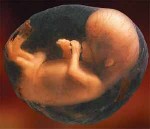
One of the big stories that blew up on the internet the other day was the publication of some results that reportedly show that females who have birthed males have male DNA in their brain. That’s pretty cool stuff! This isn’t uncommon, it’s called microchimerism, or the deposition of cells or DNA from the fetus to the mother or vice versa. It has been shown in both mice and humans that the blood of the mother contains snippets of fetal DNA and even whole cells. These have even been used to completely sequence a fetal genome using only the blood of the mother. The finding that these DNA fragments or cells can deposit themselves in the human brain is novel, and potentially cool from a brain regulation standpoint. Maybe baby boy brain cells change the mother’s brain?
However, a quick read of the abstract of the paper yesterday immediately raised a few red flags in my own brain (absolutely full of male cells, by the way). The “discovery” was made using quantitative real-time PCR and only quantitative real-time PCR on a highly repetitive male gene on the Y chromosome. Most people who aren’t scientists don’t . . . More
However, a quick read of the abstract of the paper yesterday immediately raised a few red flags in my own brain (absolutely full of male cells, by the way). The “discovery” was made using quantitative real-time PCR and only quantitative real-time PCR on a highly repetitive male gene on the Y chromosome. Most people who aren’t scientists don’t . . . More
Views: 10844 | Comments: 2
Last by Brian Krueger, PhD on Sep 08, 2012, 12:05pm
Last by Brian Krueger, PhD on Sep 08, 2012, 12:05pm

In 1990, the scientific community embarked on a landmark experiment to completely sequence the human genome. At the time, it was assumed that knowing the exact sequence of the human genome would provide scientists all of the information they ever wanted to know about genomics and how DNA contributes to human disease. At least this is how the project was presented to the public, however, every genome scientist knew that obtaining the sequence of the human genome was a lot like getting a cake recipe that listed all of the ingredients but didn't explain at all how much of each ingredient to use, how to mix the ingredients together or how long to bake that mixture to create a delicious cake. Compound that with the fact that the list contains over 35,000 ingredients and you can quickly understand why the sequence alone wasn’t very informative. We spent over 3 billion dollars to obtain this sequence and since the final publication of the sequence in 2003, the media has questioned its usefulness. Apparently, because cancer wasn’t cured in 10 years, the human genome project is largely seen by the media as a colossal waste of money; however, obtaining this sequence has been invaluable in speeding up research and has significantly contributed to our understanding of how som . . . More
Views: 34760 | Comments: 6
Last by Mike Gruidl on Feb 22, 2013, 1:22pm
Last by Mike Gruidl on Feb 22, 2013, 1:22pm
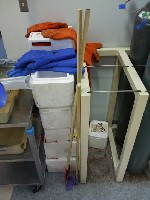
It's bound to happen in every lab. Someone is going to get distracted and for whatever reason a box full of tubes or tubes themselves are going to accidentally get dropped in the lab's liquid nitrogen container. A lot of people might say, "Screw it," and leave those samples on the bottom of the tank. This might be a good solution for some samples, but what happens when you drop half a rack of boxes to the bottom of your tank? And what happens when those boxes are full of very important cell lines that keep your lab running?
I don't want to admit it, but this is exactly what happened to me today. I was preparing an order for a collaborator and getting 5 of my cell lines out of liquid nitrogen storage. I was explaining to my summer students how to safely handle liquid nitrogen, always wear cryoprotective gloves, lift the rack slowly and be sure to drain all of the liquid nitrogen before handling the boxes, etc. I got the box I needed, and put the rack back in the tank while I was hunting for my cells. Unfortunately, I forgot to put the wire back in the rack that holds the boxes in place. When I went to put the box back that I was handling, I pulled the rack up and half the boxes were gone. "Oh, shit."
So now the rack doesn't fit in . . . More
I don't want to admit it, but this is exactly what happened to me today. I was preparing an order for a collaborator and getting 5 of my cell lines out of liquid nitrogen storage. I was explaining to my summer students how to safely handle liquid nitrogen, always wear cryoprotective gloves, lift the rack slowly and be sure to drain all of the liquid nitrogen before handling the boxes, etc. I got the box I needed, and put the rack back in the tank while I was hunting for my cells. Unfortunately, I forgot to put the wire back in the rack that holds the boxes in place. When I went to put the box back that I was handling, I pulled the rack up and half the boxes were gone. "Oh, shit."
So now the rack doesn't fit in . . . More
Views: 7594 | Comments: 0
Almost a year and a half ago, NASA ignited a media firestorm after it announced the discovery of a new organism with alien implications. The whole fiasco began when a scientist found a new bacteria in Mono Lake that could grow in the presence of high concentrations of toxic compounds. These types of bacteria are not uncommon on earth. Life seems to find a way to thrive at all extremes and a salty lake in California is no exception to this rule. Researchers have discovered a diversity of life in hot springs, at undersea volcanic vents, and on the cold arctic sea floor. The discovery of this new bacteria; however, was remarkable because the researchers believed that it could use arsenic in the place of phosphate. To the general public, this may sound trivial, but many of the biochemical reactions that provide life require phosphates. The reason why arsenic is so toxic to humans is that it injects itself into all of the processes that use phosphate and prevents those processes from working properly. For example, the molecular backbone that keeps our DNA together is composed of phosphate; the energetic molecules that are produced by the power factories in our cells are composed of phosphate; the specific addition of phosphate to some proteins turns them on or off. Phosphate and its derivatives are essential for life, so to find a bacteria that could function without phosphate and use arsenic in its place was an amazing discovery.
. . . More
. . . More
Views: 9398 | Comments: 7
Last by Martin J Sallberg on Feb 15, 2013, 6:18am
Last by Martin J Sallberg on Feb 15, 2013, 6:18am

Open science is a wonderful concept, but what happens when reporters start writing stories on data that has not been properly reviewed and vetted by the scientific establishment? Before this week, I had never really considered this question. Open science at its core is a wonderful utopian idea where scientists do their work in the open and publish their notebooks in real time on the web for everyone to see. The idea is that with this kind of transparency, better science will be done and scientists can collaborate more easily. Because all of the data will be on the internet and searchable, more scientists will be able to benefit from the open resource. Of course, there are numerous criticisms of open science. One being that it will be extremely easy for researchers in highly competitive fields to be scooped by competitors who have bigger labs or more resources at their disposal. However, it didn't occur to me until I saw stories popping up that open science could be abused by the media.
Almost a year ago, NASA held a press conference touting that it had found "alien" life. A group of researchers reported that they had found a bacteria (GFAJ-1) in Mono Lake that incorporated arsenic in place of phosphate in its DNA backbone. This press conference and the sub . . . More
Almost a year ago, NASA held a press conference touting that it had found "alien" life. A group of researchers reported that they had found a bacteria (GFAJ-1) in Mono Lake that incorporated arsenic in place of phosphate in its DNA backbone. This press conference and the sub . . . More
Views: 9529 | Comments: 0
Views: 23381 | Comments: 0
So I came across a movie about Stanislaw Burzynski and his controversial antineoplastons treatment. So I'm pretty sure you are scratching your head wondering what an antineoplaston is? Apparently Burzynski created this convoluted phrase to use instead of simply saying, its a peptide. But take it from top here gang. In 1968, Burzynski graduated from medical school at age 24 in Poland, at age ~25 he also received a doctorate in biochemistry, making him one of the country's youngest M.D., Ph.D. Are you kidding me, when did he start his MSTP training program at age 17? The claim to the Ph.D. is slightly dubious as the medical school at that time was not known to grant Ph.D.'s and faculty at the Medical Academy of Lubin report that Burzyinski only did one year of a lab research project while in medical school to receive this mystery doctorate. Also the guy never received any specialized training in cancer or cancer therapeutics. So flash forward to 1973, Burzynski has spent the past three years at Baylor COM working in a lab isolating peptides from rat brains. He receives his license and is able to practice medicine in the US and also gets a three year grant to study urinary pepti . . . More
Views: 7741 | Comments: 4
Last by Brian Krueger, PhD on Oct 24, 2011, 8:40am
Last by Brian Krueger, PhD on Oct 24, 2011, 8:40am
Here are the slides from the presentation I gave on Monday. We recorded a video, but I'm not sure how it turned out. I have a feeling the audio is going to be bad so I might just sit down and do it over again this weekend on my laptop.
Two of the slides are movies. The first is a clip from "Flock of DoDos" where some lady says scientists are horrible communicators and the other is the AARP shrimp on treadmills commercial.
. . . More
Two of the slides are movies. The first is a clip from "Flock of DoDos" where some lady says scientists are horrible communicators and the other is the AARP shrimp on treadmills commercial.
. . . More
Views: 9544 | Comments: 2
Last by Brian Krueger, PhD on Oct 17, 2011, 11:55am
Last by Brian Krueger, PhD on Oct 17, 2011, 11:55am
AARP put out a commercial a few months ago deriding wasteful spending in Washington. Unfortunately, the soundbytes don't accurately represent the full story behind the spending. Have a watch before continuing.
. . . More
. . . More
Views: 8265 | Comments: 0
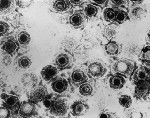
In the current political climate it has become clear that science is a major target of Republican directed budget cuts. However, the soundbytes of politics do not represent the importance of science in our lives. Because of this, I think it's extremely important that we explain why some of our model systems are so important for understanding how viruses and ultimately human disease work.
In the lab that I run, we currently work on mutating two different herpesviruses. One of these is Kaposi's Sarcoma Herpesvirus (KSHV) and the other is Murid Herpesvirus 68 (MHV68). Both of these viruses are gammaherpesviruses. In humans, KSHV only really ever becomes a problem in individuals who have a compromised immune system such as those infected with human immunodeficiency virus (HIV). KSHV is an interesting virus because its default program is latency, meaning that once it gets into your cells, it turns itself off and waits for conditions which allow it to grow and take over. This is akin to a bear hibernating in the winter. We do not understand how or w . . . More
In the lab that I run, we currently work on mutating two different herpesviruses. One of these is Kaposi's Sarcoma Herpesvirus (KSHV) and the other is Murid Herpesvirus 68 (MHV68). Both of these viruses are gammaherpesviruses. In humans, KSHV only really ever becomes a problem in individuals who have a compromised immune system such as those infected with human immunodeficiency virus (HIV). KSHV is an interesting virus because its default program is latency, meaning that once it gets into your cells, it turns itself off and waits for conditions which allow it to grow and take over. This is akin to a bear hibernating in the winter. We do not understand how or w . . . More
Views: 5773 | Comments: 0
Wow! Mrs. Irish has posted pictures of her students using the microscope, slides and workbooks that we helped purchase for her classroom. This is exactly why we work so hard to try to bring in donations through the DonorsChoose program.

 There are still 60 or so unfunded projects on our giving page, sp please stop by and help in any way you can.
There are still 60 or so unfunded projects on our giving page, sp please stop by and help in any way you can.
. . . More


. . . More
Views: 2249 | Comments: 0
I know, know, paper is so 1990 but I just wanted to pull a paper over at Nature to read during seminar later. Unfortunately I used the big fat "Print" button on the manuscript page. This is what I got:

Notice anything funny about the figures?
I guess next time I'll just download the PDF and print it that way. However, even I know that if you stick blocks of text and figures in DIV or P code blocks, they won't get hacked off by the browser print renderer. I think some web developer was sleeping at the keyboard. A good example of this on LabSpaces can be seen if your try printing this page. You'll notice that in the browser rendered view, all 3 images butt up on one another, however in the print preview, the third image is moved to the bottom of the second page. This is because the image is in a DIV and the browser knows to not cut images in DIVs in half.
I can't be the only person that's ever tried using that button, right?
. . . More

Notice anything funny about the figures?
I can't be the only person that's ever tried using that button, right?
. . . More
Views: 1677 | Comments: 2
Last by JaniceF on Sep 04, 2011, 4:31pm
Last by JaniceF on Sep 04, 2011, 4:31pm
Bachmann Says She'd Consider Everglades Drilling by associatedpress
God caused the hurricane and now this shit? It saddens me that these people are top political candidates.
. . . More
Views: 2089 | Comments: 6
Last by Brian Krueger, PhD on Aug 22, 2011, 2:23pm
Last by Brian Krueger, PhD on Aug 22, 2011, 2:23pm
Here's a true timelapse video of a day in lab. Pictures were taken every minute for 24 hrs. The video goes from about 4am to 4am the next day.
And because someone asked...The images were taken with a GoProHD Hero camera and then compiled in Windows Live MovieMaker. Images are displayed for 0.1 seconds.
. . . More
And because someone asked...The images were taken with a GoProHD Hero camera and then compiled in Windows Live MovieMaker. Images are displayed for 0.1 seconds.
. . . More
Views: 1523 | Comments: 5
Last by Brian Krueger, PhD on Aug 09, 2011, 8:51am
Last by Brian Krueger, PhD on Aug 09, 2011, 8:51am
Just messing around with timelapse on my GoPro. This is only about 2 hours before the battery died. Maybe tomorrow I'll set it up for 24hr and plug it into a nearby computer for power.
. . . More
Views: 1038 | Comments: 7
Last by FunkDoctorX on Aug 03, 2011, 7:27pm
Last by FunkDoctorX on Aug 03, 2011, 7:27pm
A week or so ago someone forgot to close the door on our enzyme freezer tightly. I had just ordered $1,000 worth of NEB enzymes to make high throughput sequencing libraries too... Before the meltdown, I made a couple of test libraries to be sure that the protocol was worked out.

One of my test libraries with a perfect library smear. We extract the DNA in between the 200 and 300bp bands for sequencing.
. . . More

One of my test libraries with a perfect library smear. We extract the DNA in between the 200 and 300bp bands for sequencing.
Views: 1980 | Comments: 6
Last by Brian Krueger, PhD on Mar 23, 2012, 9:13am
Last by Brian Krueger, PhD on Mar 23, 2012, 9:13am
A quick update on the side project since I'm procrastinating writing a short fellowship grant... About a month ago I realized why my sonications were not working. It turns out that when I moved to Florida from my Graduate work at Iowa, I didn't update my ChIP protocol to reflect a reagent change. At Iowa, we had been using 16% paraformaldehyde as our crosslinking agent. Unfortunately, I was throwing 37% formaldehyde in there instead meaning that I was way over crosslinking my samples which explains why I was having such a hard time shearing the DNA. I practically cemented all of the proteins in the cell together. Anyway, I had some more downtime this week waiting for a new batch of cells to grow for a massive timecourse experiment involving 3 timepoints and 10 different immunoprecipitations for cool proteins. I used this waiting period to optimize sonication conditions with the fancy programmable sonicator.

Misonix 4000, power 60, 30s on 1 min off. Numbers above lanes equals the number of cycles
. . . More

Misonix 4000, power 60, 30s on 1 min off. Numbers above lanes equals the number of cycles
. . . More
Views: 996 | Comments: 5
Last by Brian Krueger, PhD on Jun 01, 2011, 12:44pm
Last by Brian Krueger, PhD on Jun 01, 2011, 12:44pm
In a recent episode of the new TV show, Happy Endings (Episode on HuLu), one of the characters, Dave, gets super excited when he runs into and reconnects with his favorite high school teacher. The only problem is that the teacher turns out to be an alcoholic douche, but Dave spends the entire episode fawning over the guy until he realizes that the teacher is just an underachieving loser who is trying to bed his friend Penny.
The nostalgic undertones of this show got me thinking about my favorite high school teachers. It should be no surprise that my favorite teachers are my science teachers. Many of them helped inspire me to pursue a career in science. I'm not sure if I should thank them or hate them for that.
Regardless, my senior year of high school was exciting because I was taking a bunch of really cool AP science classes. At the time, my favorite teacher award was a dead heat between my AP bio teacher and my AP physics teacher. The physics guy was new to the school. It was either his first or second year there. I really liked his teaching style. He forced us to think about the problems he gave us and always answered our questions with qu . . . More
The nostalgic undertones of this show got me thinking about my favorite high school teachers. It should be no surprise that my favorite teachers are my science teachers. Many of them helped inspire me to pursue a career in science. I'm not sure if I should thank them or hate them for that.
Regardless, my senior year of high school was exciting because I was taking a bunch of really cool AP science classes. At the time, my favorite teacher award was a dead heat between my AP bio teacher and my AP physics teacher. The physics guy was new to the school. It was either his first or second year there. I really liked his teaching style. He forced us to think about the problems he gave us and always answered our questions with qu . . . More
Views: 1201 | Comments: 3
Last by Brian Krueger, PhD on Apr 27, 2011, 2:01pm
Last by Brian Krueger, PhD on Apr 27, 2011, 2:01pm

The University of Iowa will be holding s science writing symposium tomorrow (April 27th). The symposium will be webcast LIVE at this address from 1PM to 5PM CST:
https://webapps1.healthcare.uiowa.edu/webcast/Default.aspx
There's a login screen now, but that will disappear once the talks start.
. . . More
Views: 1850 | Comments: 1
Last by Brian Krueger, PhD on Apr 24, 2011, 7:31pm
Last by Brian Krueger, PhD on Apr 24, 2011, 7:31pm
I've been working on this project on and off for a few months now. You may remember my previous post about attempting sonication trials. Unfortunately, things in lab have been busy trying to get a new graduate student started and troubleshooting problems with other experiments so I haven't had as much time to devote to this project as I would like. I've spent the past month or so trying to optimize my sonication conditions on a sonicator that's in my building, and I've gotten less than spectacular results (I've tested at least 10 different conditions on this machine ex: buffers, cell densities, sonication intensity, sonication duration). I'm looking to break my DNA up into short 100-300 base pair fragments and previously I was only able to get them down to about 600. I decided it was time to test other sonicators and here are the results.

Fisher 100 sonic dismembrator vs Misonix 4000 - 1/8" tapered tip.1 mL of RIPA buffer containing 1x107 cells. Numbers above the lanes indicate the number of cycles that were done (30 seconds on 1.5 minutes of rest between cycles)
. . . More

Fisher 100 sonic dismembrator vs Misonix 4000 - 1/8" tapered tip.1 mL of RIPA buffer containing 1x107 cells. Numbers above the lanes indicate the number of cycles that were done (30 seconds on 1.5 minutes of rest between cycles)
Views: 1062 | Comments: 2
Last by Brian Krueger, PhD on Mar 17, 2011, 10:17am
Last by Brian Krueger, PhD on Mar 17, 2011, 10:17am
Today I noticed my Tomato Clownfish acting a little friskier than usual. A few days ago I saw a white bump under the female's anal fin and thought it might be a fungal infection because it had a goofy gray tinge to it. I figured I'd just wait and see what developed. Well today I noticed that it was much bigger and longer...It was her ovipositor (egg laying tube)!! She also had a big fat round belly, so that really means only one thing. I watched her and the male clownfish do their dance and the ovipositor grew longer while the male started showing signs of arousal too. I guess a video is worth more than my explanation. I started recording after the first egg went down. It's the little orange sac in the middle of the screen. This patch grows much larger over the course of the 10 minute video. Enjoy!
. . . More
Mass eggs start going down around the 2 minute mark if you don't want to watch the fish dance.
. . . More
Views: 5818 | Comments: 8
Last by americanbiotech on Mar 10, 2011, 12:22pm
Last by americanbiotech on Mar 10, 2011, 12:22pm
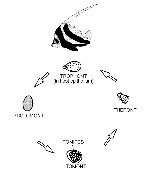
Every once in a while I find myself having a "grass is greener" moment in science. I sit at the computer thinking about all of the annoying things in lab that aren't working and wonder, "If I could answer any question, given unlimited resources, what would I choose to study?" This, my friends, is where I prove my unhealthy obsession with fish.
If money, fame, and science groupies weren't a priority, I'd spend my time and resources trying to find a cure for Cryptocaryon irritans, which is better known in the tropical fish industry as white spot disease, Ich, or Crypto. Crypto is a nasty little bug. It's a protozoan ectoparasite that lodges itself in the epidermis of fish where it grows until it drops off to mature into an Aliens inspired cyst that spits out 300 new little bastard parasites that go on to infect more host fish. In the open ocean, this guy isn't so terrible because its chances of infecting a host are minimal considering the massive amount of water a parasite has to travel through to find a new host. This is a completely different story at an aquaculture facility or in the home aquarium where fish are typically stocked to capacity in relatively small volumes of water. A single cyst can quickly turn into a fish killing epidemic. . . . More
If money, fame, and science groupies weren't a priority, I'd spend my time and resources trying to find a cure for Cryptocaryon irritans, which is better known in the tropical fish industry as white spot disease, Ich, or Crypto. Crypto is a nasty little bug. It's a protozoan ectoparasite that lodges itself in the epidermis of fish where it grows until it drops off to mature into an Aliens inspired cyst that spits out 300 new little bastard parasites that go on to infect more host fish. In the open ocean, this guy isn't so terrible because its chances of infecting a host are minimal considering the massive amount of water a parasite has to travel through to find a new host. This is a completely different story at an aquaculture facility or in the home aquarium where fish are typically stocked to capacity in relatively small volumes of water. A single cyst can quickly turn into a fish killing epidemic. . . . More
Views: 884 | Comments: 1
Last by Dr. Girlfriend on Mar 02, 2011, 2:11pm
Last by Dr. Girlfriend on Mar 02, 2011, 2:11pm
Things have started to calm down a bit on my weekends so I've had more time to attend to fish. One of the crappiest things about owning a saltwater fish tank is that you can't just add fish to your system immediately. The fish come from the ocean covered in parasites, so you have to take extra special care of new additions to be sure they're clear of parasites and infections before you add them to your main "display" tank. Quarantining fish is absolutely a necessary evil. A lot of people neglect to do this, but it saves a ton of headaches. Trust me on this, you would much rather lose an $80 fish than get your $3000 display tank infested with a parasite!
Anyway, the fall got clogged with trips and holidays. Some of you may remember that back in October I tried to quarantine a yellow longnose butterfly fish and a powder blue tang that both died from a nasty bacterial infection. Given that quarantining fish takes at most 2 months if they get sick, I didn't have enough time to cycle in more fish before Turkey Day! Once Christmas passed, I was working on setting up an office tank for Whitney, so my quarantine system has been occupied with her inhabitants for the past two months... Finally I was able to pick up a new butterfly fish a few weeks ago. . . . More
Anyway, the fall got clogged with trips and holidays. Some of you may remember that back in October I tried to quarantine a yellow longnose butterfly fish and a powder blue tang that both died from a nasty bacterial infection. Given that quarantining fish takes at most 2 months if they get sick, I didn't have enough time to cycle in more fish before Turkey Day! Once Christmas passed, I was working on setting up an office tank for Whitney, so my quarantine system has been occupied with her inhabitants for the past two months... Finally I was able to pick up a new butterfly fish a few weeks ago. . . . More
Views: 10193 | Comments: 13
Last by Brian Krueger, PhD on Feb 07, 2011, 10:23am
Last by Brian Krueger, PhD on Feb 07, 2011, 10:23am
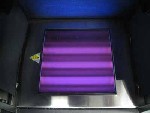
"This is the one thing you never want to mess around with. You'll wake up in the middle of the night crying like a baby and you'll have no idea why." These were the sage words of my undergraduate advisor, it's too bad they got discarded with everything else that I learned in undergrad.
------
My scientific career has been filled with plenty of misadventures and screw ups. Most of them are really boring mistakes that didn't involve bodily harm, and only resulted in weeks of repeated work or extended nights in the lab re-preparing samples. Though, every good scientist has an epic fail story locked away in their skeleton closet. I think many of us go into science in the beginning thinking that we're unstoppable know it alls. That is until some event punches us in the gut to tell us, "Open your eyes and pay attention or else next time I'm going to aim a little lower and negatively affect your chances of reproduction."
When I was in undergrad, I worked on a bunch of projects ranging from ecology field studies to molecular biology projects in plants and fish. One of the last projects I worked on was one where we were trying to determine if fish bacterial infections could be transferred from mother to egg. This project involved c . . . More
------
My scientific career has been filled with plenty of misadventures and screw ups. Most of them are really boring mistakes that didn't involve bodily harm, and only resulted in weeks of repeated work or extended nights in the lab re-preparing samples. Though, every good scientist has an epic fail story locked away in their skeleton closet. I think many of us go into science in the beginning thinking that we're unstoppable know it alls. That is until some event punches us in the gut to tell us, "Open your eyes and pay attention or else next time I'm going to aim a little lower and negatively affect your chances of reproduction."
When I was in undergrad, I worked on a bunch of projects ranging from ecology field studies to molecular biology projects in plants and fish. One of the last projects I worked on was one where we were trying to determine if fish bacterial infections could be transferred from mother to egg. This project involved c . . . More
Views: 2701 | Comments: 9
Last by Brian Krueger, PhD on Jan 20, 2011, 12:17pm
Last by Brian Krueger, PhD on Jan 20, 2011, 12:17pm
I'm finally coming out of my Scio11 coma. It was a super exciting weekend filled with talks about technology, blogging, and new media. On Saturday, Kristy Meyer, Dr. Isis and I led a panel discussion on the use of new communication tools in academic and industry science.
The discussion covered a wide range of topics. One of the first that was brought up was how new media tools might be used to increase collaboration between science and industry. One participant stated that she was surprised by the lack of collaboration between academic and industry scientists in the Research Triangle Park area. She said there really was no resource for expert discovery and thought that the creation of a local database would be helpful in finding connections.
Expanding on this researcher database idea, I asked the audience to talk about their use of currently available social networking tools like LabMeeting, MyNetResearch, BioKM, Mendeley, ResearchGate, etc. One biotech researcher said that his company was open to using these tools privately, and that's really what I have seen and heard of over the years. Companies and institutions want to find bette . . . More
The discussion covered a wide range of topics. One of the first that was brought up was how new media tools might be used to increase collaboration between science and industry. One participant stated that she was surprised by the lack of collaboration between academic and industry scientists in the Research Triangle Park area. She said there really was no resource for expert discovery and thought that the creation of a local database would be helpful in finding connections.
Expanding on this researcher database idea, I asked the audience to talk about their use of currently available social networking tools like LabMeeting, MyNetResearch, BioKM, Mendeley, ResearchGate, etc. One biotech researcher said that his company was open to using these tools privately, and that's really what I have seen and heard of over the years. Companies and institutions want to find bette . . . More
Views: 2782 | Comments: 11
Last by Thomas Joseph on Jan 04, 2011, 7:47am
Last by Thomas Joseph on Jan 04, 2011, 7:47am
I'm beginning a new project in lab. It's a series of ChIP-seq experiments and the first step to doing ChIP-seq properly is optimizing sonication conditions. Here's a trial run with the sonicator I plan on using. The DNA shown in the gel is from cells containing latent herpes virus. We're looking to shear the DNA so that the bulk of it is between 100 and 600bp. For ChIP-seq we extract and purify the DNA in the 100-300 range in the gel. Looks like about 13 cycles of sonication should do (sonication past this point doesn't result in smaller fragments, don't want to risk over sonicating)! Actually, I think I'm going to do this again on Monday. I looked back at some old data and I should be able to get the fragment sizes a bit smaller by increasing the pulse time. I'll post an update soon!

. . . More

. . . More
Views: 6544 | Comments: 1
Last by Evie on Dec 18, 2010, 11:17am
Last by Evie on Dec 18, 2010, 11:17am
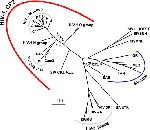
Yesterday there was some buzz over at Huffington Post about a stem cell cure for HIV. I first ran across the article via a link a friend of mine had posted on Facebook. The HuffPo piece is scant on details, so I’ll provide a quick run down on what’s going on here. But first, a lesson in HIV virology…
Human immunodeficiency virus (HIV) was first discovered in the 1980’s when gay men and IV drug users started turning up in hospitals with very odd opportunistic infections like Kaposi’s Sarcoma Herpes virus. These individuals had severely compromised immune systems and the original name given to the condition was gay related immunodeficiency disorder (GRID). The discovery of a viral cause of the disease came in 1983 from the labs of Luc Montagnier (recently won the Nobel Prize for this work) and Robert Gallo (recently didn’t win the Nobel Prize and is kind of pissed about it).
Genetic tests have shown that HIV originated in African monkeys and is related to a similar condition in monkeys called Simian Immunodeficiency Virus (SIV). It is thought that the virus was passed on to humans through the consumption of “bush meat” in sub-saharan . . . More
Human immunodeficiency virus (HIV) was first discovered in the 1980’s when gay men and IV drug users started turning up in hospitals with very odd opportunistic infections like Kaposi’s Sarcoma Herpes virus. These individuals had severely compromised immune systems and the original name given to the condition was gay related immunodeficiency disorder (GRID). The discovery of a viral cause of the disease came in 1983 from the labs of Luc Montagnier (recently won the Nobel Prize for this work) and Robert Gallo (recently didn’t win the Nobel Prize and is kind of pissed about it).
Genetic tests have shown that HIV originated in African monkeys and is related to a similar condition in monkeys called Simian Immunodeficiency Virus (SIV). It is thought that the virus was passed on to humans through the consumption of “bush meat” in sub-saharan . . . More
Views: 2933 | Comments: 3
Last by Evie on Dec 18, 2010, 10:48am
Last by Evie on Dec 18, 2010, 10:48am

In a previous post I mentioned that I spent the first year of graduate school working on a dead end project that was going nowhere. I’m going to present and discuss the findings of the paper that changed the direction of my thesis project and ultimately lead to the completion of my PhD.
In the fall of 2006, I was finishing up the last few experiments on a project trying to link P53 (a very important protein in cells that helps to prevent cancer) to one of the most important transcriptional activators, P-TEFb. I should probably pause for a second here to give a little bit of background on P-TEFb so that what follows is somewhat understandable. Positive transcription elongation factor b (P-TEFb: Pee Tef bee) is a protein kinase (read as on/off switch) that regulates RNA polymerase II transcription of most genes. RNA polymerase II is the protein responsible for messenger RNA (mRNA) transcription or the process of turning DNA into mRNA. Without mRNA, the transfer form of DNA, proteins cannot be made by the cell, and life does not exist. Essentially, P-TEFb tells RNA polymerase when it’s ok to start making RNA. You can think of P-TEFb as the starter at a track meet, you know, the guy th . . . More
In the fall of 2006, I was finishing up the last few experiments on a project trying to link P53 (a very important protein in cells that helps to prevent cancer) to one of the most important transcriptional activators, P-TEFb. I should probably pause for a second here to give a little bit of background on P-TEFb so that what follows is somewhat understandable. Positive transcription elongation factor b (P-TEFb: Pee Tef bee) is a protein kinase (read as on/off switch) that regulates RNA polymerase II transcription of most genes. RNA polymerase II is the protein responsible for messenger RNA (mRNA) transcription or the process of turning DNA into mRNA. Without mRNA, the transfer form of DNA, proteins cannot be made by the cell, and life does not exist. Essentially, P-TEFb tells RNA polymerase when it’s ok to start making RNA. You can think of P-TEFb as the starter at a track meet, you know, the guy th . . . More
Views: 19272 | Comments: 136
Last by Isabel on Nov 26, 2010, 3:02pm
Last by Isabel on Nov 26, 2010, 3:02pm

With the launch of this year’s “Rock Stars of Science” campaign, there’s been a lot of talk about how to best promote science. I’m no marketing guru, but I am a scientist. This latest campaign is better than last years', only because it’s more diverse, but I think it really misses the boat. Is the public really going to be inspired by a couple of pictures in GQ of scientists looking uncomfortable and over dressed in the presence of Rock Stars? The most appalling aspect of this campaign is that there is no highlight of the researchers or their science. There truly are some science all stars in this group, many of which are well spoken.
However, the Rock Stars of science pages in GQ only list the scientist’s name and title, while the “Rock stars” get a one or two sentence summary of how awesome they are for standing in on these pictures. What’s the real focus of this campaign? To promote Bret Michaels’ latest reality TV dreck? If a reader wants to actually understand why these scientists were chosen and what they’re doing to cure disease, they have to visit the website. I find it hard to believ . . . More
However, the Rock Stars of science pages in GQ only list the scientist’s name and title, while the “Rock stars” get a one or two sentence summary of how awesome they are for standing in on these pictures. What’s the real focus of this campaign? To promote Bret Michaels’ latest reality TV dreck? If a reader wants to actually understand why these scientists were chosen and what they’re doing to cure disease, they have to visit the website. I find it hard to believ . . . More
Views: 1087 | Comments: 14
Last by Thomas Joseph on Nov 23, 2010, 12:01pm
Last by Thomas Joseph on Nov 23, 2010, 12:01pm
Views: 2019 | Comments: 11
Last by Brian Krueger, PhD on Feb 07, 2011, 10:01am
Last by Brian Krueger, PhD on Feb 07, 2011, 10:01am
When I started graduate school at Iowa, I went in there with a chip on my shoulder. They didn’t choose me, I chose them. They weren’t a highly ranked “elite” institution, so to make my mark I had to work for the biggest and the best that Iowa had to offer, or so I thought. I sought out the highest profile researchers at Iowa and picked the one that best aligned with my interests. No matter what school you look at, there’s always, “That Professor.” You know who I’m talking about. The professor who publishes the most papers, who has the most respect.
I did my homework on my mentor. I read a bunch of old papers, I understood the direction and the goals of the lab. I remember our first lab meeting vividly, well, I remember how I felt after the lab meeting. I was exhausted. My brain physically hurt. I thought I knew it all going into that meeting and I realized I didn’t know anything. It was a wake up call, but I think I liked that feeling. It was fresh and challenging.
During my rotation, I put in ungodly long hours, not because I thought it was expected of me, but because I wanted to. At this point in time I was enamored with the science. It’s funny how this changed for me as I look back on my four and a half years in t . . . More
I did my homework on my mentor. I read a bunch of old papers, I understood the direction and the goals of the lab. I remember our first lab meeting vividly, well, I remember how I felt after the lab meeting. I was exhausted. My brain physically hurt. I thought I knew it all going into that meeting and I realized I didn’t know anything. It was a wake up call, but I think I liked that feeling. It was fresh and challenging.
During my rotation, I put in ungodly long hours, not because I thought it was expected of me, but because I wanted to. At this point in time I was enamored with the science. It’s funny how this changed for me as I look back on my four and a half years in t . . . More
Views: 1467 | Comments: 10
Last by biochem belle on Oct 10, 2010, 6:30pm
Last by biochem belle on Oct 10, 2010, 6:30pm
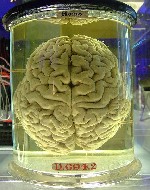
Today is: "What I'd be doing if I wasn't doing science" blog post theme day. The goal of this post theme is to let our readers get to know who we are and what our non-scientific interests are.
1. DamnGoodTechnician says that she'd probably have majored in sociology and become an administrative assistant if it wasn't for her high school sweetheart and his penchant for genetics.
2. Dr. O was involved with every group and club under the sun in high school and really wanted to become a broadway performer and until recently she had her heart set on teaching high school science but research sucked her in.
3. Evie would be everything. First she'd be a ninja kung fu master, then she'd learn how to talk to dolphins, create world peace and turn earth into an atheist utopia. Evie needs to lay off the caffeine pills
4. . . . More
1. DamnGoodTechnician says that she'd probably have majored in sociology and become an administrative assistant if it wasn't for her high school sweetheart and his penchant for genetics.
2. Dr. O was involved with every group and club under the sun in high school and really wanted to become a broadway performer and until recently she had her heart set on teaching high school science but research sucked her in.
3. Evie would be everything. First she'd be a ninja kung fu master, then she'd learn how to talk to dolphins, create world peace and turn earth into an atheist utopia. Evie needs to lay off the caffeine pills
4. . . . More
Views: 1532 | Comments: 14
Last by Brian Krueger, PhD on Apr 10, 2011, 6:49am
Last by Brian Krueger, PhD on Apr 10, 2011, 6:49am
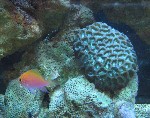
I thought about this question probably everyday of my graduate school career. My days usually went like this:
1. Get to lab at 7am
2. Start 12hr experiment
3. 7pm, experiment failed
4. 7:15pm set it all up again for tomorrow
Eventually I got everything to work but that 12hr period in the middle was filled with:
"I bet me engineer friends don't have to deal with this shit, and they're getting paid 6 times as much as me."
"I should have just become a web designer. I have fun doing that AND things usually work the first time."
"I want to run away to the cirus and become a Barker."
My PhD mentor once told me that I was the weirdest person he'd ever met because I have too many hobbies. He didn't think I could be successful in lab if I ran a website, went to the gym for two hours in the middle of the day, maintained my saltwater fish tank etc. I think he saw all of these things as distractions, or more like, "If he spent that energy in lab, he'd have a billion papers by now." Well, Honestly I can only take so much science and I need all of these hobbies to keep me sane. Further, I think I could turn any of my hobbies into careers.
In middle school, my mom worked for a computer training c . . . More
1. Get to lab at 7am
2. Start 12hr experiment
3. 7pm, experiment failed
4. 7:15pm set it all up again for tomorrow
Eventually I got everything to work but that 12hr period in the middle was filled with:
"I bet me engineer friends don't have to deal with this shit, and they're getting paid 6 times as much as me."
"I should have just become a web designer. I have fun doing that AND things usually work the first time."
"I want to run away to the cirus and become a Barker."
My PhD mentor once told me that I was the weirdest person he'd ever met because I have too many hobbies. He didn't think I could be successful in lab if I ran a website, went to the gym for two hours in the middle of the day, maintained my saltwater fish tank etc. I think he saw all of these things as distractions, or more like, "If he spent that energy in lab, he'd have a billion papers by now." Well, Honestly I can only take so much science and I need all of these hobbies to keep me sane. Further, I think I could turn any of my hobbies into careers.
In middle school, my mom worked for a computer training c . . . More
Views: 3044 | Comments: 5
Last by microbiologist xx on Sep 26, 2010, 8:15am
Last by microbiologist xx on Sep 26, 2010, 8:15am
I'm going to preface this by saying that I am not a medical expert. I don't even begin to pretend I know anything about medicine or how to cure diseases. I do watch those cheesy "Untold stories of the ER" shows on Discovery and TLC though, and sometimes I partially remember things they say about diagnoses.
This story begins back when I was finishing up my PhD at Iowa. I had successfully defended my thesis (thank god) and was out on a drinking excursion with "the boys" the weekend before I was moving down to Florida to start my new job. The evening started out just like any other, we pregamed at my buddy's apartment drinking cheap beer, cooking up some quick dinner and bullshitting about how much being a graduate student sucks. You know, the typical poor graduate student routine.
We finally got a cab and made it down to "downtown" which in Iowa City consists of 3 businesses and 75 bars filled with helplessly drunken co-eds. I swear it wasn't more than 15 minutes into the night when my buddy, who shall be referred to as "Dr. Millner" from here on out, started hiccuping. These weren't your normal "Hiccup for 10 minutes and be done with it" type of hiccups, these things were going to last for hours. Of course, being a medical student an . . . More
This story begins back when I was finishing up my PhD at Iowa. I had successfully defended my thesis (thank god) and was out on a drinking excursion with "the boys" the weekend before I was moving down to Florida to start my new job. The evening started out just like any other, we pregamed at my buddy's apartment drinking cheap beer, cooking up some quick dinner and bullshitting about how much being a graduate student sucks. You know, the typical poor graduate student routine.
We finally got a cab and made it down to "downtown" which in Iowa City consists of 3 businesses and 75 bars filled with helplessly drunken co-eds. I swear it wasn't more than 15 minutes into the night when my buddy, who shall be referred to as "Dr. Millner" from here on out, started hiccuping. These weren't your normal "Hiccup for 10 minutes and be done with it" type of hiccups, these things were going to last for hours. Of course, being a medical student an . . . More
Views: 1790 | Comments: 9
Last by Nikkilina on Sep 21, 2010, 7:58am
Last by Nikkilina on Sep 21, 2010, 7:58am
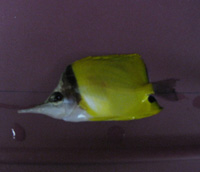
I came into lab yesterday to a disaster. I took a look at my quarantine tank and it was filled with a white bacterial bloom, the bottom of the tank was covered in what looked like leftover food and fish poop, and the water smelled like rotting fish. To top it off, the Powder Blue Tang could not right itself, and was swimming upside down and in circles. For those of you that have never owned fish, upside down and in circles is usually referred to as the "death roll." The yellow longnose butterfly fish seemed just fine though. I have absolutely no clue why there were feces and food all over the tank. I'm the only person in lab that messes with the fish and everyone knows that if they touch anything to do with the tanks without asking me, they're liable to get their hands whacked off with the guillotine paper cutter. Both fish were doing just fine when I left them on Saturday and did their daily feeding and tank cleaning. The presence of the amount of food and feces in the tank was very surprising. I do a 25% water change EVERYDAY on this tank AFTER feeding to clean up any uneaten food and feces from the night before. I'm convinced someone messed with it, because there's no other explanation. I rushed to do a massive water change. This involved making . . . More
Views: 1721 | Comments: 8
Last by David Manly on Sep 13, 2010, 10:37pm
Last by David Manly on Sep 13, 2010, 10:37pm
This is kind of stupid, but I thought I'd share a video of my new lab fish. Who knows if they'll survive quarantine, but we can bask in their beauty for a while.
*This entry contains a YouTube video*
The blue-ish one is a powder blue tang approximately 3" long and the yellow one is one of my favorite fish of all time! It's a yellow long nose butterfly fish. The tang is covered in a pretty common parasite so they have to stay in quarantine for a few weeks. The treatment regimen is to lower the salinity by 70% and then let the fish hang out in that for 4 weeks. Amazingly, saltwater fish can survive in very low salinity water, the parasite can't and eventually dies out as all of the eggs hatch. Although, the unfortunate thing is that salinity can be reduce drastically over a one hour period, but the salinity must be raised back up to normal much much more slowly. It usually takes a week and a half to bring the quarantine tank's salinity back up without killing the fish. I'm sure there's some interesting physiology involved there ;) So maybe in 6 weeks I'll post another video of these guys swimming in the main tank!
*This entry contains a YouTube video* . . . More
*This entry contains a YouTube video*
The blue-ish one is a powder blue tang approximately 3" long and the yellow one is one of my favorite fish of all time! It's a yellow long nose butterfly fish. The tang is covered in a pretty common parasite so they have to stay in quarantine for a few weeks. The treatment regimen is to lower the salinity by 70% and then let the fish hang out in that for 4 weeks. Amazingly, saltwater fish can survive in very low salinity water, the parasite can't and eventually dies out as all of the eggs hatch. Although, the unfortunate thing is that salinity can be reduce drastically over a one hour period, but the salinity must be raised back up to normal much much more slowly. It usually takes a week and a half to bring the quarantine tank's salinity back up without killing the fish. I'm sure there's some interesting physiology involved there ;) So maybe in 6 weeks I'll post another video of these guys swimming in the main tank!
*This entry contains a YouTube video* . . . More
Views: 50558 | Comments: 12
Last by Brian Krueger, PhD on Jun 24, 2013, 8:39am
Last by Brian Krueger, PhD on Jun 24, 2013, 8:39am

I’m totally late to this party. I spent the morning writing my rebuttal to DrugMonkey and Co, doing the news, and cranking out a few pesky experiments. Ah, to live the life, right? Anyway, I’ve noticed that all of the good topics are now taken so I have to scrub the bottom of the bucket. I think one of the most important decisions I made in my scientific career was when I decided where I wanted to go to graduate school. The factors that play ball in this game are numerous and obviously not the same for everyone, but here’s my rundown of all of the things I wish I knew before heading off to graduate school.
Not to be too bitter about my undergraduate experience or anything, but the graduate school preparation was horrendous. No one told me from the beginning, “If you want to go to graduate school, here’s the X, the Y and the Z.” This may all sound like common sense, but some of it is not and having someone tell me all about X, Y, and Z my freshman year would have been helpful.
Do grades matter?
YES. They matter as much as they do for your annoying pre-med classmates, especially if you want to go to a . . . More
Not to be too bitter about my undergraduate experience or anything, but the graduate school preparation was horrendous. No one told me from the beginning, “If you want to go to graduate school, here’s the X, the Y and the Z.” This may all sound like common sense, but some of it is not and having someone tell me all about X, Y, and Z my freshman year would have been helpful.
Do grades matter?
YES. They matter as much as they do for your annoying pre-med classmates, especially if you want to go to a . . . More
Views: 4903 | Comments: 2
Last by Brian Krueger, PhD on Jun 29, 2010, 8:48am
Last by Brian Krueger, PhD on Jun 29, 2010, 8:48am
One of the biggest problems facing the eradication of hard to kill viruses such as HIV is that viruses mutate readily. A standard technique for creating lasting immunity against viruses is the creation of vaccines. These have been used for years to eradicate a multitude of viruses. There are three standard types of vaccines that have been used in the past. There are attenuated viral vaccines which use a weakened form of the virus to challenge the immune system, killed virus vaccines which use dead viral particles to trigger the immune system, and finally there are peptide vaccines which use the expression of a specific viral protein to trigger the immune system. Although these approaches work readily for many viruses, in the case of a small subset of human pathogens, such as for HIV, these techniques cannot be used to create lasting immunity. In these cases, the virus mutates so readily that any immunity gained is quickly lost because the immune system can no longer recognize the virus.
. . . More
. . . More
 |
 |
Friends






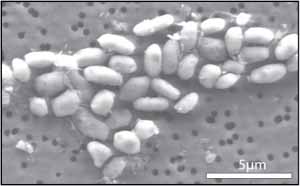

Jaeson, that's not true at most places. Top tier, sure, but 1100+ should get you past the first filter of most PhD programs in the sciences. . . .Read More
All I can say is that GRE's really do matter at the University of California....I had amazing grades, as well as a Master's degree with stellar grades, government scholarships, publication, confere. . .Read More
Hi Brian, I am certainly interested in both continuity and accuracy of PacBio sequencing. However, I no longer fear the 15% error rate like I first did, because we have more-or-less worked . . .Read More
Great stuff Jeremy! You bring up good points about gaps and bioinformatics. Despite the advances in technology, there is a lot of extra work that goes into assembling a de novo genome on the ba. . .Read More
Brian,I don't know why shatz doesn't appear to be concerned about the accuracy of Pacbio for plant applications. You would have to ask him. We operate in different spaces- shatz is concerned a. . .Read More